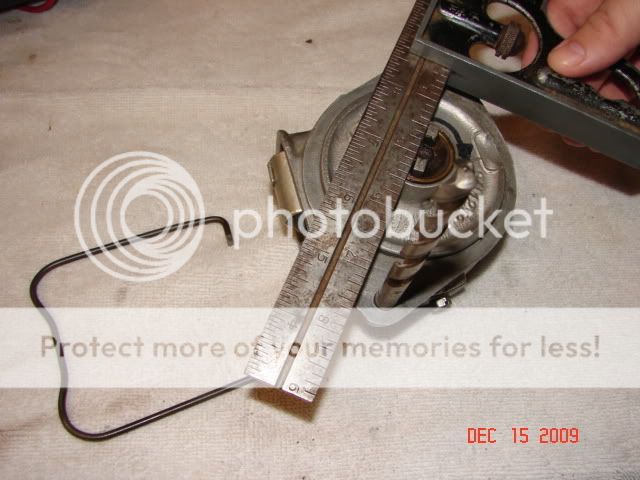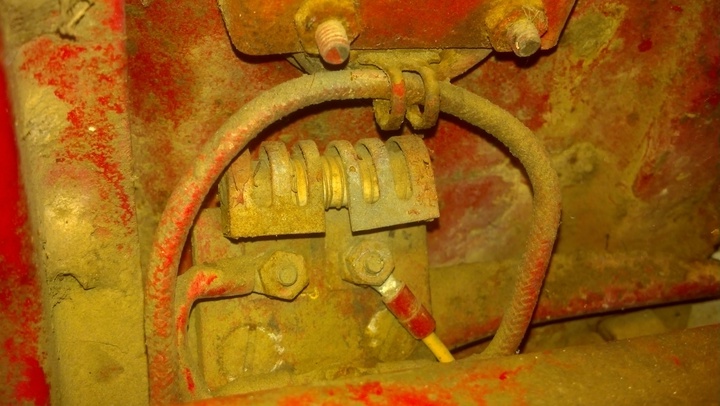Anonymous-0
Well-known Member
Hello all, I am new to the forum and new to tractors.
I grew up pretending to be a mechanic in my parents' garage and pretty much know how most automotive things work...however I started working with an HEI motor so points are not something I have much experience with.
I did read the sticky at the top but chose to post in this forum vs the Ford forum because I don't know this issue is manufacturer specific. Mods, please feel free to move if you feel otherwise.
So the story goes:
A couple months back I purchased a well-running 49 8n. The only thing strange was that it required choke to start, even when warm, but changing out the plugs (am using 437s) fixed that right up. Good.
I put about 12 hours of brush-hogging on the tractor without a single mechanical problem (just some leaky PTO seals). Then one day I try to start it and it wont fire up! I checked the basics and had fuel to carb/spark to plugs...should be working.
First thing I did was to pull apart the carb and give it a good cleaning, I hadn't done that yet. It didn't seem to bad but there were a few floaters so I thought that would do it. Both fuel filter screens looked OK and the float was set at 1/4". Both mixture screws seemed to be way off however (Idle was at 1/4 turn out and main was 5 1/2 turns out!). I set them back to 1 turn out, each, to start.
The tractor hesitantly fired up and ran better than before. I worked it for another two hours, no problems. Until I shut it down...then again it would not start! I let it sit an hour and came back and after a few tries is did start, ran fine, and I parked it in the garage. The next day the same story...it did not want to start but eventually did. Still had spark, gas tank was over half full and carb was getting fuel. I ran another 2 hours and parked it by my barn, bad idea, and again it would not start back up. At all. I even tried ether directly in the chambers and still no bang! That made me suspect the spark, though present while the plugs were out of the motor, was too weak to fire under compression.
I then ordered every ignition part as to not be messing around because next week I have about 170 postholes to dig with it: New coil, cap/rotor, points/condenser, plugs, wires and gaskets. I found one very interesting thing when I took it apart: The points were A) Waaaay too close together (probably under .010, where spec calls for .015), and B) badly burned up (which I only truly learned after seeing what new points look like). I figured the points were the cause, so I carefully replaced everything and set the points to .015 (per both the tool that came with them as well as my own blades). I verified the gap at all four lobes to make sure it was the same. Put it all back together and it started up, with a little choke, and idled fine. However it ran like total doo the moment it got past 1/2 throttle. It backfires and stutters and just runs like doo. I verified the plug gaps and the firing order, double-checked the carb...no luck. I did notice there was a timing tab on the dizzy (had been hidden by gunk when I took it apart so I don't know what it had originally been set to), I tried the middle, full advance, full retarded, half advance and half retarded...little improvement.
I then recalled that the points had been ridiculously close together when I took it apart. I tore back into it, set the points to about .010 (a little wider than when I took it apart), put it together and it fired RIGHT up, no choke, and ran much much better at high RPM. Still some missing but night and day vs the .015 gap. This made me realize the previous owner probably set the gap tight on purpose to get it running well, and that probably explains why the points were so burned up.
Sorry for the novel, just wanted to address all basic questions right away as to waste nobody's time!
HERE is my problem/question: What root problem would cause this? This is where my lack of experience with points is holding me back, that or I am missing something painfully obvious here. I searched around the internets before posting and have yet to find any clues about this. My guess is that it has something to do with timing but I don't completely buy it because the timing adjustment on the dizzy made no improvement to how it ran after mid-throttle (which I assume is where the centrifugal advance kicks in?).
I appreciate your time taken just to read though this mess, even if you don't post a reply.
Thanks,
Nick
I grew up pretending to be a mechanic in my parents' garage and pretty much know how most automotive things work...however I started working with an HEI motor so points are not something I have much experience with.
I did read the sticky at the top but chose to post in this forum vs the Ford forum because I don't know this issue is manufacturer specific. Mods, please feel free to move if you feel otherwise.
So the story goes:
A couple months back I purchased a well-running 49 8n. The only thing strange was that it required choke to start, even when warm, but changing out the plugs (am using 437s) fixed that right up. Good.
I put about 12 hours of brush-hogging on the tractor without a single mechanical problem (just some leaky PTO seals). Then one day I try to start it and it wont fire up! I checked the basics and had fuel to carb/spark to plugs...should be working.
First thing I did was to pull apart the carb and give it a good cleaning, I hadn't done that yet. It didn't seem to bad but there were a few floaters so I thought that would do it. Both fuel filter screens looked OK and the float was set at 1/4". Both mixture screws seemed to be way off however (Idle was at 1/4 turn out and main was 5 1/2 turns out!). I set them back to 1 turn out, each, to start.
The tractor hesitantly fired up and ran better than before. I worked it for another two hours, no problems. Until I shut it down...then again it would not start! I let it sit an hour and came back and after a few tries is did start, ran fine, and I parked it in the garage. The next day the same story...it did not want to start but eventually did. Still had spark, gas tank was over half full and carb was getting fuel. I ran another 2 hours and parked it by my barn, bad idea, and again it would not start back up. At all. I even tried ether directly in the chambers and still no bang! That made me suspect the spark, though present while the plugs were out of the motor, was too weak to fire under compression.
I then ordered every ignition part as to not be messing around because next week I have about 170 postholes to dig with it: New coil, cap/rotor, points/condenser, plugs, wires and gaskets. I found one very interesting thing when I took it apart: The points were A) Waaaay too close together (probably under .010, where spec calls for .015), and B) badly burned up (which I only truly learned after seeing what new points look like). I figured the points were the cause, so I carefully replaced everything and set the points to .015 (per both the tool that came with them as well as my own blades). I verified the gap at all four lobes to make sure it was the same. Put it all back together and it started up, with a little choke, and idled fine. However it ran like total doo the moment it got past 1/2 throttle. It backfires and stutters and just runs like doo. I verified the plug gaps and the firing order, double-checked the carb...no luck. I did notice there was a timing tab on the dizzy (had been hidden by gunk when I took it apart so I don't know what it had originally been set to), I tried the middle, full advance, full retarded, half advance and half retarded...little improvement.
I then recalled that the points had been ridiculously close together when I took it apart. I tore back into it, set the points to about .010 (a little wider than when I took it apart), put it together and it fired RIGHT up, no choke, and ran much much better at high RPM. Still some missing but night and day vs the .015 gap. This made me realize the previous owner probably set the gap tight on purpose to get it running well, and that probably explains why the points were so burned up.
Sorry for the novel, just wanted to address all basic questions right away as to waste nobody's time!
HERE is my problem/question: What root problem would cause this? This is where my lack of experience with points is holding me back, that or I am missing something painfully obvious here. I searched around the internets before posting and have yet to find any clues about this. My guess is that it has something to do with timing but I don't completely buy it because the timing adjustment on the dizzy made no improvement to how it ran after mid-throttle (which I assume is where the centrifugal advance kicks in?).
I appreciate your time taken just to read though this mess, even if you don't post a reply.
Thanks,
Nick




